As we arrived back into Arequipa, high from our amazing three-day hike through the second deepest canyon in the world, we grabbed our backpacks from Park Hostel, said our goodbyes and set about checking in to our next hostel in the city.
There was nothing wrong with Park Hostel – in fact we totally loved the spectacular views of El Misti from the roof terrace – but I wanted to stay somewhere a little more lively for my birthday. Having also had a few days to familiarise myself with the city, I’d decided that my favourite parts of Arequipa were the streets close to the Santa Catalina Monastery and the Plaza San Francisco, so that’s the area we decided to move to.
The Flying Dog Hostel is located inside an old (and bright yellow!) colonial building along Calle Melgar, and as we walked through the large entrance gates I felt excited to be staying in the heart of the city’s historic district for the next couple of nights.
We walked into the reception area where one of the members of staff asked us to take a seat and promptly set about getting us checked in. We handed over our passports and immigration cards (as was standard practice when checking in at a new hotel or hostel) and waited while the gentleman disappeared to the next room to photocopy them.
When he returned, rather than simply returning our identification documents to us and offering us our new room key, he insisted that we must not only pay upfront for the room (which wasn’t that unusual in itself) but that we must also pay tax of 18% of the cost of the room per day because our visas were no longer valid.
What did he mean, our visas were no longer valid?
We had 90 days in the country from the date of entry into Peru – which was the 2nd of April. This meant that our 90th day on Peruvian soil would be the 1st of July, and it was only the 27th of June.
“Pero la visa es para noventa días.” (90 days)
The gentleman shook his head, and pointed to a handwritten figure inside the entry stamp in my passport – clearly the number 30.
I stuttered clumsily in disbelief. All the articles we’d read before coming to Peru advised us that British citizens were entitled to stay in the country for a period of up to 180 days. Even when we arrived, bleary-eyed, into Lima airport, in the unsociably early hours of that Wednesday morning, I distinctly remember the immigration officer asking how long we were planning to spend in the country. I also distinctly remember replying to him,
“approximadadamente tres meses señor.” (approximately three months)
So why, on God’s earth, would he only grant us 30 days?
I hadn’t even thought to check – and neither had Stu.
Not only that but neither had any of the staff in the numerous hostels and hotels we’d checked into since the 2nd of May (nearly two months ago!)
Once we’d got over the initial shock of realising we’d overstayed our visa by nearly two months, we then started to panic about the consequences.
Overstaying your visa was a serious issue, right? Especially by that length of time.
All sorts of thoughts started buzzing around inside my head, mostly involving police, huge fines and jail sentences. It wasn’t even as if we had a plausible excuse for our mistake. I very much doubted that stupidity and ignorance would get us very far in a court of defence.
Fortunately the gentleman at the hostel wasn’t going to turn us in to the police, but he did suggest that we visit the British Consulate as soon as possible to seek advice. We were due to arrive at the Bolivian border in a matter of days, and I suspect the border police could pretty much hold us to ransom for every penny we owned (or even deport us or throw us in jail) if we didn’t get the matter sorted before then.
So, whilst we had planned to have a relaxing stroll around Arequipa’s sights and attractions that afternoon, instead we found ourselves taking a very long walk out of central Arequipa, in the direction of the Yanahuara district.
By the time we arrived at the Consulate we’d worked ourselves up into a panic-stricken sweat about the whole situation. I speak a limited amount of Spanish and I understand even less. My vocabulary doesn’t stretch much beyond the day-to-day traveller scenarios like organising transport, ordering food and booking accommodation. So how on earth was I even going to attempt to explain our predicament if the Consulate Official did not possess a sufficient enough understanding of the English language to make communication between us even possible?
The uniformed gentleman at the gates shook his head when I asked,
“habla inglés?”
I tried again.
“Tenemos un problema con los visados.”
He subsequently disappeared inside the gatehouse, closed the door and made a phone call, after which he gravely instructed us to wait.
We stood there for what seemed like forever, wondering who the guard had called and worrying about exactly how much trouble we were in.
Sometime later we spotted a gentleman on the opposite side of the gates walking towards us. He was plain-clothed and didn’t look at all Peruvian. As he approached we noticed a smile on his face, and as he began to talk we realised he was English.
Not only that but some years ago before he moved to Peru, he used to live in a city not far from our hometown.
We explained our problem from start to finish. He agreed that yes there is an unwritten law that British citizens should be permitted to stay in Peru for a period of up to six months but that, at the end of the day, it is down to the discretion of the Immigration Officer, and ours was clearly ‘having a bad day’ when we arrived.
He was also quick to reassure us that overstaying your visa in Peru does not carry such severe ramifications as it does in many other countries. The fine is just $1 per day, which would equate to just over $60 each by the time we left the country. We were also quite fortunate to be in Peru’s third largest city when we realised our oversight. I can only imagine what a different story it would have been were we in the more isolated parts of rural Peru.
The only problem was that it was Friday afternoon and the immigration office would not open again until Monday morning, which meant that we would have to stay in Arequipa for an extra two days, thus reducing the amount of time we’d have in Puno to explore Lake Titicaca.
Still, it was a small price to pay.
The helpful gentleman gave us his card with his contact details on, and invited us to get in touch if we had any further queries. He also took down my email address so that he could forward the immigration office address to us, and a map of how to get there.
Feeling an enormous sense of relief as we left the Consulate, I was able to enjoy my own birthday and not have to break it to my mum on hers that I may be going to jail for overstaying my visa.
First thing Monday morning we hailed a taxi and made our way up to the immigration office. The whole process was actually reasonably straightforward and trouble-free, and although there is quite a bit of running backwards and forwards to the local convenience store over the road to pay for numerous photocopies of various documents, we were back in central Arequipa within two hours.
I hope you never have to make the same trip, but if you do there are a few facts to bear in mind:
- You will have to pay for your visa extension in US dollars. If you don’t have any (as we didn’t; nowhere else in Peru requires payment in US dollars), it’s a short five minute walk to the nearest bank (Banco Nacional), where you can exchange your Peruvian soles for US dollars. Remember to get a receipt, as you’ll need one back at the immigration office.
- Make sure you have plenty of loose change on you to pay for photocopies. The lady in the shop over the road charges 10 centimos per copy (correct at 30/06/14).
- A taxi to the immigration office from central Arequipa should set you back around seven soles.
The full address of the Arequipa Immigration Office is as follows:
Migraciones (Superintendencia Nacional Peru)
Urbanizacion Quinta Tristan
2do Parque
Distrito Jose Bustamante y Rivero
Opening hours: Monday to Friday: 8.00 am to 4.15 pm
Whilst our visa oversight on this occasion had turned out to be a lot cheaper and more problem-free than we’d ever imagined, it may have been a completely different story had we been in a different country, so – regardless of what you’ve asked for or any rules and regulations you’ve read online – always check and triple check the information on your visa and (if applicable) immigration card.
Since our visa issue I’ve spoken to several other Brits travelling through Peru and all of them were given a 90-day visa. So it appears that – as the gentleman at the Consulate advised – the Immigration Officer who admitted us at Lima airport simply was having a bad day.
However it was a bad day that had cost us $124, and a couple of days of unnecessary worry, stress and wasted time. It also meant that we had just one full day remaining (instead of three) in which to explore the Peruvian side of Lake Titicaca.
All the more reason to make every hour of that one day count 🙂
Have you ever overstayed a visa? Where was it and what were the repercussions?
If you like this article, please follow along on Facebook, Twitter, or Google+ or you can look me up on Instagram or Pinterest too!
This is part of the #SundayTraveler link-up, hosted by Chasing The Donkey, Pack Me To, A Southern Gypsy, The Fairytale Traveler, and Ice Cream and Permafrost.

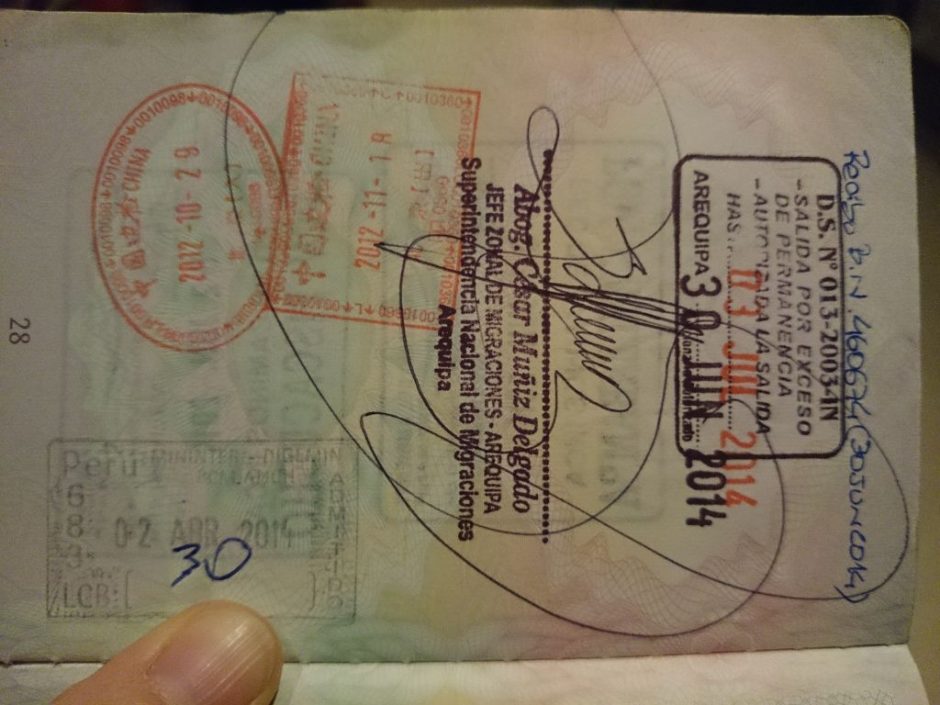

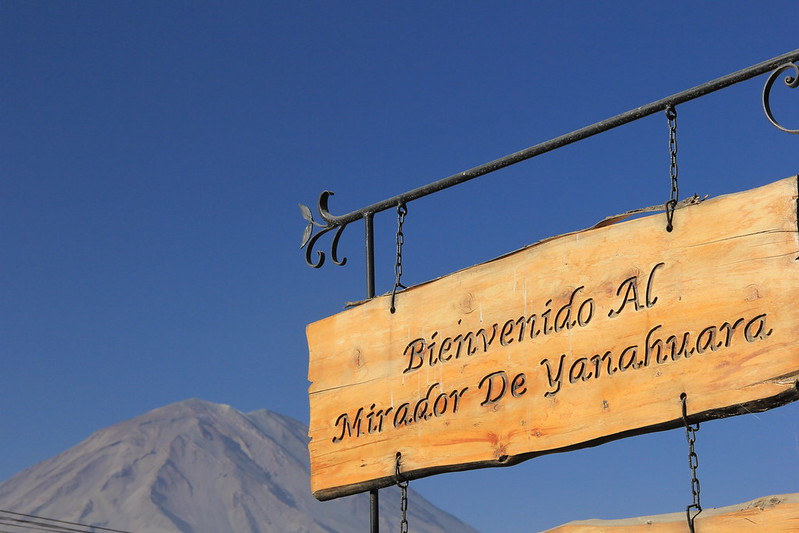
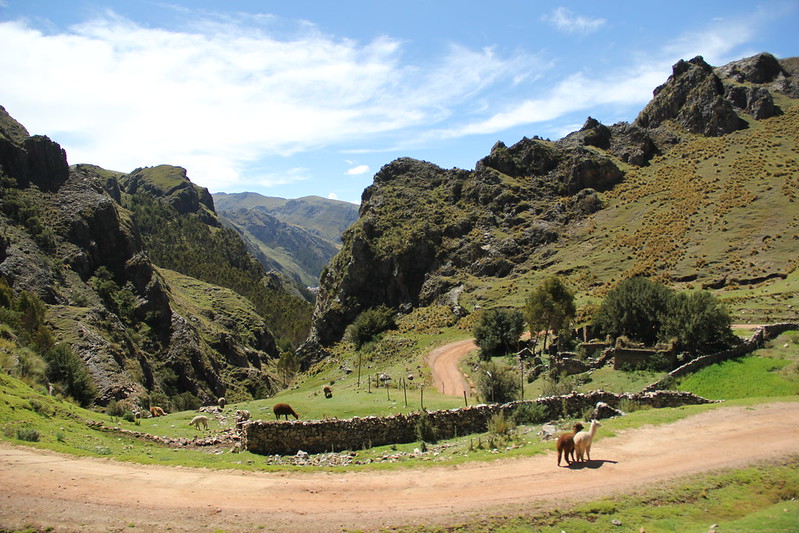
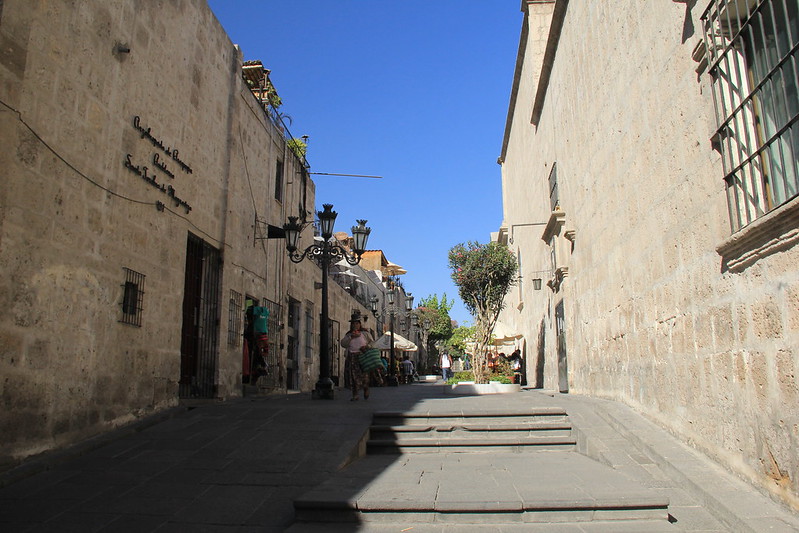
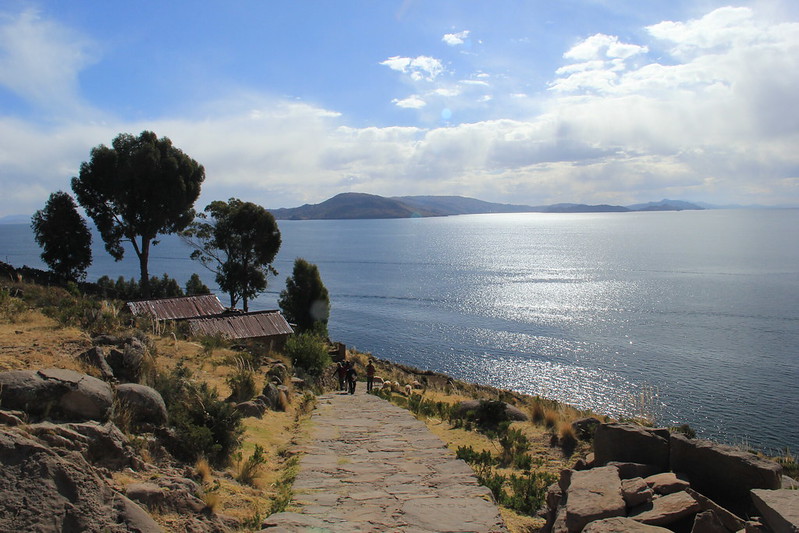





8 Comments
Oh my god! How scary! I’m so relieved for you that all you had to do was pay the fine, and that it wasn’t a hefty one. I can’t believe the immigration officer only gave you 30 days. What an a-hole. And I can’t believe nobody else noticed it before then. D is always SUPER careful to make sure that we know exactly how many days we get in each country so that this kind of thing doesn’t happen. So glad nothing worse happened!
The thing is that I’m normally super organised and double-check and triple-check everything. The only conclusion I can come to for not doing so was that I was clearly too excited about the fact that I was about to spend a whole three months in Peru! 😉
No way, how stressful! Visa regulations drive me crazy – I can’t believe you got into trouble because of one individual who was in a bad mood and didn’t even bother to tell you he’d given you only 30 days..! I overstayed my Thai visa by a few days recently because of an accident that forced me to stay in the country longer than planned, but thankfully it’s not a big deal here, you just have to pay a fee. Although they do register you as an “offender”, so I was worried I would be questioned the next time I entered the country, but nope, nothing!
Yeah, I was pretty annoyed that the immigration officer had caused us unnecessary worry and stress by only admitting us for 30 days when we told him we were planning to stay three months, but I was more relieved that we only had to pay a fine (and a pretty small one at that). That’s good to know that in Thailand you just have to pay a fee too, as Thailand is one of my favourite countries and one I return to as often as I can 🙂
Oh no, I cannot imagine the stress!! So good that you could solve it with a reasonable fine… I never thought that the number of days allowed could depend on the person who put the stamp! (I just checked my last stamp, everything ok, pfffiu).
No, I never thought it could either, and I’m sure in a lot of countries it doesn’t, but South American countries do have a rather unstable/corrupt history compared to other parts of the world!
Wow! I have no idea what I would do if that happened to me. All the things that ran trough your head was going through mine as I was reading this. I’m glad it all worked out for you though!
I know, I was so worried! And I was kicking myself for being so dumb I didn’t check (I’m normally so meticulous about these things) I was so lucky 🙂